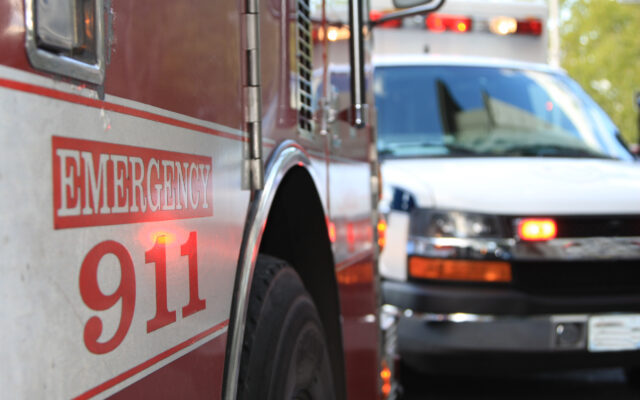Lessons from the Derek Chauvin verdict

▶ Watch Video: After the Derek Chauvin verdict
Over and over again, he said it: “Believe your eyes. What you saw, you saw.”
Prosecutor Steve Schleicher, in final arguments to the jury in the Derek Chauvin murder trial, said: “It’s exactly what you saw with your eyes. It’s exactly what you knew. It’s what you felt in your gut. It’s what you now know in your heart. … This wasn’t policing – this was murder.”
From every angle, jurors saw, and took in, what Darnella Frazier, then 17, dared to record on her cell phone. They watched witnesses weep describing how they saw George Floyd die, and did what so many other juries have not: they believed.
“I was relieved that the jury found him, Derek Chauvin, guilty, and was surprised that they did,” said Dartmouth College African-American history professor Matthew Delmont, discussing the verdict with colleagues last week. “We’ve seen so many cases, from Rodney King to the present, where video evidence would seem to guarantee that police would be found guilty.”
But the police officers who beat Rodney King in 1991 were acquitted.
Delmont said, “I think if Darnella Frazier hadn’t taken that video, I don’t think it’s possible that the jury would have convicted Derek Chauvin. Without that video, I don’t think you see the massive protests across the country and globally last summer. And without that, I don’t think there’s the pressure on Minneapolis to bring the case in the way that they did.
But, he adds, “the visual proof doesn’t guarantee justice.”
Delmont grew up in Minneapolis, not far from where Floyd died. If he sounds wary, it’s because Americans have seen with their own eyes, for decades, the horror of Emmett Till’s face after he was lynched in 1955.
There was Eric Garner in 2014. He, too, said, “I can’t breathe.”
At least 64 more people were killed by police in the U.S. just during the Chauvin trial, including 20-year old Daunte Wright just a few miles from the courthouse.
Correspondent Martha Teichner asked professor Duchess Harris, a race scholar at Macalester College in St. Paul, “When it happens in your city, you take it personally?”
“I can’t not take this personally, not as a Black mom in the Twin Cities,” Harris replied. “There’s no way. All of this is personal to me. There has been a killing of an unarmed Black man every summer since 2014.”
The litany of police killings in the Twin Cities includes Philando Castile in 2016 – his girlfriend live-streaming the aftermath on Facebook. The cop who shot him was found not guilty of manslaughter.
“I did the research, and when Philando Castile was killed, 60% of White Americans were opposed to Black Lives Matter,” Harris said.
Harris, too, has been grappling with what happened between then and now – how, among the tens of millions of Americans who defied COVID quarantines last summer to march in George Floyd’s name behind Black Lives Matter banners, huge numbers were White: “What I have come to at this point is my own understanding that so many White people just didn’t know, and I didn’t realize that they didn’t know, and that’s partly because I’m living my life, and I’ve never had the opportunity not to know.”
President Joe Biden said this week, “It was a murder in full light of day, and it ripped the blinders off for the whole world to see.”
Teichner asked writer Alex Kotlowitz, “Why did White people not see with their own eyes what was before them?”
“To be perfectly frank, even if there were no images, why did we not hear?” he replied. “Why did we not listen?”
Kotlowitz has spent his career trying to straddle the racial divide. In 1998, “Sunday Morning” accompanied Kotlowitz to two southwestern Michigan towns which featured in his book, “The Other Side of the River”: Benton Harbor, predominantly Black, incredibly distressed, across the river from St. Joseph, all White and very prosperous.
One kid from Benton Harbor told Kotlowitz he felt safer in his own town than in St. Joseph, despite Benton Harbor having 20 murders in one year compared to St. Joseph’s three murders in 25 years.
Fear was also the reason St. Joseph residents said they don’t go to Benton Harbor. “What does that say to you?” Teichner asked Kotlowitz then.
“Well, it says to me we have a long way to go in this country to build some kind of connection, the bridges between people,” Kotlowitz replied.
He told Teichner today: “I would go into the White community, St. Joseph, and the people would say, ‘But why are you writing about this racism issue around here?’ They were so disconnected from their neighborhoods across the river, that they couldn’t even begin to sort of imagine what it meant to be Black in this country.”
Couldn’t see each other, Kotlowitz came to believe, even though they were neighbors. “Maybe that’s the one thing that’s different about this moment,” he said. “White Americans finally saw what Black Americans have seen and experienced for a long time.”
For more info:
- Matthew Delmont, Dartmouth College
- Duchess Harris, Macalester College
- Alex Kotlowitz
- “The Other Side of the River: A Story of Two Towns, a Death, and America’s Dilemma” by Alex Kotlowitz (Anchor), in Trade Paperback, eBook and Audio formats, available via Amazon and Indiebound
Story produced by Sari Aviv. Editor: Steven Tyler.
See also:
- Eric Garner’s mother reacts to Derek Chauvin’s conviction: “Tears started falling from my eyes” (“CBS This Morning”)



